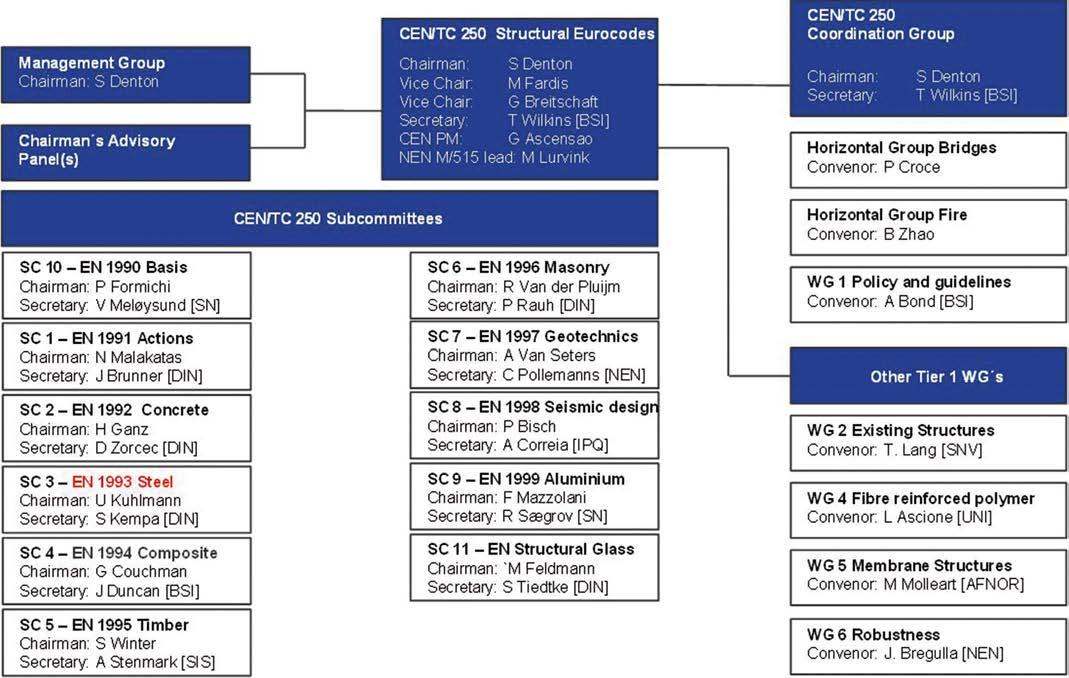
2 minute read
The convenient equilibrium between the development and updating of a normative code, research and engineering practice
Fig. 1 Organizational structure of CEN/TC250 [3]
formal vote, publication may not be completed until 2024.
In general, the revision can be subdivided into the following two activities:
– General revisions and maintenance of the Eurocodes:
This is the usual procedure for a code revision according to CEN, which is launched in the form of a call for “systematic reviews” to the NSBs (National Standardization Bodies, e.g. DIN, AFNOR, BSI, AENOR, etc.). The evaluation and implementation of the suggestions and comments is then carried out by the CEN
TC250 Subcommittees and Working Groups. – Technical enhancements of the Eurocodes within the scope of Mandate M/515: Further development takes place simultaneously with the general revision within
Mandate M/515. Similarly to the transfer of the ENV versions into the EN versions, the realization is conducted by Project Teams (PTs) that consist of a maximum of fve or six members.
The CEN/TC 250 work programme has been split into four overlapping phases. This has been done to enable the interdependencies between activities to be managed effectively and to ensure that the work is undertaken as effciently as possible.
Phase 1 includes those parts of the work programme upon which other activities are primarily dependent for reasons of overall coordination, technical scope or because they are essential for achieving the target dates for delivery of the next generation of Eurocodes. Phase 1 of the mandate started in 2015 and ended in 2018 after three years. Phase 2 started in 2017, also for a term of three years. Phase 3 and Phase 4 started in 2018 [3].
There are two main aims of the mandate work concerning the improvement and harmonization of existing rules: reduction in the number of NDPs and enhancing ease of use. Tab. 1 gives a summary of the number of NDPs in the current Eurocodes relative to the number of parts in each Eurocode and number of pages. In fact, Eurocode 3 has one of the the highest number of NDPs in comparison to the other Eurocodes, but also the highest number of pages.
The especially large variety of diferent steel structures has led to altogether 20 parts, which cover an exceptionally large scope of diferent steel structures including buildings, bridges, silos, tanks, masts and towers. The very uneven distribution also shows that for some Eurocodes, NDPs form a means to overcome diferent views on technical items. In these cases document N1250 [2] recommends a procedure to overcome these diferences in order to achieve better harmonization.
As a second point “enhancing ease of use” has been defned as a major aim of the development of the 2nd Generation of Eurocodes. A number of principles and related priorities have been defned after long discussions in





